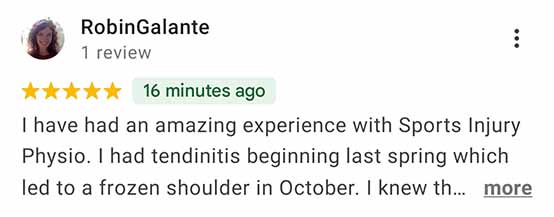Foam roller: Hamstrings - Learn how, but also when not to roll your hamstrings
- Maryke Louw
- Jan 14, 2018
- 3 min read
Updated: Dec 8, 2023
It's natural for your hamstrings to feel a bit tight and stiff after training, and using a foam roller or doing hamstring stretches can really help to ease the discomfort. But you need to be mindful of the fact that rolling or stretching them out may not be enough. If your hamstrings continue to feel tight, sore, or uncomfortable during or after training, they may be telling you that they need a rest or that your lower back isn’t happy. If that’s the case, foam rolling your hamstrings won’t really make any difference.

In this article:
Video: How to foam roll your hamstrings
Video: How to foam roll your hamstrings
When to foam roll your hamstrings
Before training: Research suggests that foam rolling before training can improve your flexibility. Researchers are a bit divided on whether or not it actually improves performance, but it has not been shown to have any negative effects on performance. You can read more about the benefits of foam rolling here.
After training: It may be useful to foam roll your hamstrings after training as it has been shown to improve flexibility and there is some evidence to suggest that it can reduce the amount of soreness that you feel after exercise.
When not to use a foam roller on your hamstrings
Do not use a foam roller if you suspect that you may have pulled or torn your hamstring. You’ve likely torn your hamstring if you developed a sudden pain or pull while you were exercising or if you have swelling or bruising. Using a foam roller within the first 5 days can worsen the injury. It will also not help you heal any quicker.
Be careful when you roll over the bony points where the hamstrings attach at your sit-bone (ischial tuberosity) or at the knee. Compressing the hamstring tendons onto those bony points can make injuries worse or cause compression injuries if you are too aggressive..
Note: Commission may be earned on the links above
When foam rolling your hamstrings won’t work
If your hamstrings have been over-worked and you are not giving them enough time to recover between bouts of exercise, they will remain tight and sore and foam rolling will have no lasting effect. In this case they need relative rest. Do activities that are low impact and low intensity.
If your hamstring tightness is caused by neural tension. Stiffness in your glutes and lower back or injury to the lower back can sometimes stop your sciatic nerve from sliding freely. Your brain then causes the hamstrings to tighten up in order to protect the sciatic nerve. If this is the case your hamstrings will remain tight until the cause of the neural tension has been addressed. A physiotherapist can help you with this and this is something that one of our team can diagnose and treat via an online physio consultation via video call.
If your hamstring discomfort is due to referred pain from your lower back or sciatica, then foam rolling the hamstrings may bring transient relief. But as with the increased neural tension mentioned above, you will have to sort out the injury higher up if you want to permanently improve it. Foam rolling can often also cause sciatic pain to increase if the sciatic nerve is very sensitive.
Need more help with your injury? You’re welcome to consult one of the team at SIP online via video call for an assessment of your injury and a tailored treatment plan.

We're all UK Chartered Physiotherapists with Master’s Degrees related to Sports & Exercise Medicine. But at Sports Injury Physio we don't just value qualifications; all of us also have a wealth of experience working with athletes across a broad variety of sports, ranging from recreationally active people to professional athletes. You can meet the team here.

About the Author
Maryke Louw is a chartered physiotherapist with more than 15 years' experience and a Masters Degree in Sports Injury Management. Follow her on LinkedIn or ResearchGate.













